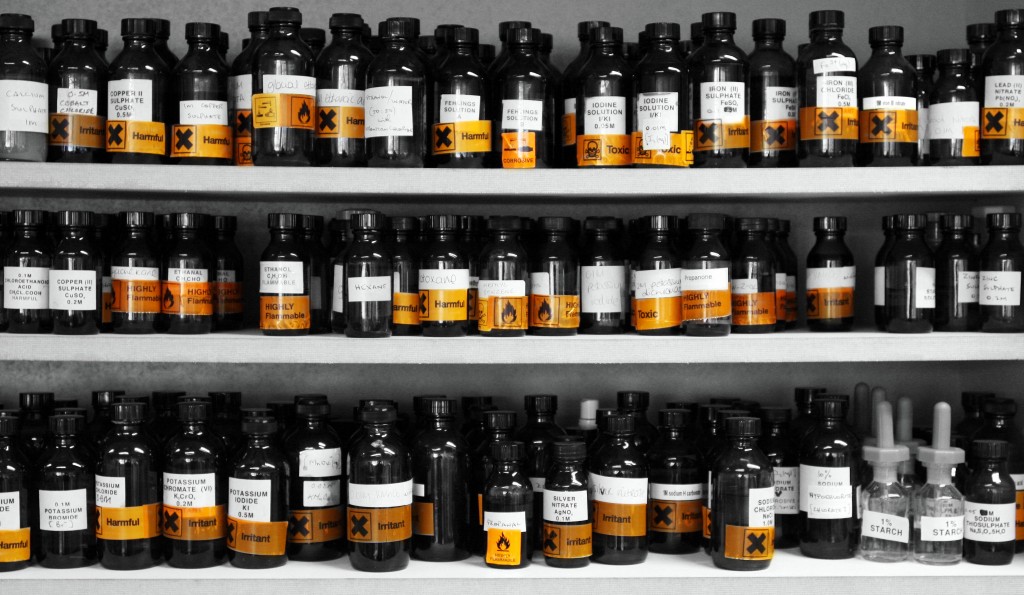With the introduction of the Psychoactive Substances Act today, our Policy Editor takes a close look at the possible outcomes, and posits what alternatives the UK, and others, should be considering in this long read.
It is done.
It is now illegal to sell, make, import or export all but a few explicitly exempted psychoactive substances. While it has taken longer than planned for the Government to enact the Psychoactive Substances Act, various wrinkles around scientific research, poppers, social supply and enforcement of the new Act seem to have been largely smoothed over, if not exactly ironed out, and it has now come into force.
There has been much handwringing about the Act’s many shortcomings, but what it may actually achieve still remains to be seen. More than this, though, where do we do from here? Markets don’t stand still simply because they are made illegal, so what is likely to happen, and how should Government respond, in light of the Act?
Better than nothing?
Despite being roundly criticised by seemingly everyone from drug policy reformers through to police and the Government’s own advisers, there is acceptance among some that it may at least be better than the status quo of an unregulated market. Jeremy Sare, Director for Communications and Operations at the Angelus Foundation, a charity that has campaigned for government action on legal highs, outlines their position. “We’re generally supportive of the Act, it’s an improvement on the current situation,” he notes, and he insists it shouldn’t be dismissed prematurely, “For some, if it is not considered a perfect solution, it’s considered to be useless, and I don’t think that’s the case. We can carry on with a laissez-faire attitude or we can actually do something.”
Sare acknowledges the Act is far from ideal though. “It’s not as if the Government have played a blinder with this legislation,” he concedes, “With nitrous oxide, we don’t see a strong case for its inclusion. For most people, dosages are measured in balloons, and it’s not physically addictive. The ACMD recommended against its inclusion.”
The case is far more compelling for other substances though, he contends, “Something like synthetic cannabis, which is awful stuff, and far more dangerous that actual cannabis. You don’t know what you are taking, can’t measure the dose, it’s a complete unknown! We see it as valuable that the high street trade is shut down for these substances, especially considering the way they’re marketed. In London it is not so much of an issue, but it is a different matter in places like the North Yorkshire coast.”
Irish Outcomes
Evidence of the Act’s probable effects can be sought in Ireland, where similar legislation has been in place since 2010, and it gives the clearest picture of what is likely to happen here. Tim Bingham, a researcher on drug use trends and harm reduction based in Ireland highlights the successes of the Irish Act. “There are positives, it has taken the head shops off the streets.”
He stresses that the situation in Ireland when their Act was instated in 2009, at which point it had 102 head shops, was markedly different to the case here in the UK, though. “We had the worst extreme of an unregulated market. Head shops were selling legal highs on credit, offering home delivery, two for one offers, it was really chaotic.” Bingham’s experiences seem to support the case for removing the hight street trade “I dread to think what would happen if the head shops were open now.”
Bingham is also keen to counter reports that the Act has been a failure in Ireland. He derides the “Media [that] sensationalised reports that the PS Act ‘doesn’t work’,” pointing out that the worrying cases in the Cavan area which seem to show rampant NPS use (specifically synthetic cannabinoid receptor agonists – SCRAs) all fail to mention that the source of the legal highs was across the boarder in Northern Ireland, and significantly overplay the scale of the problem.
As usage of NPS has reduced in Ireland, Bingham has recorded a switch back in the student population to use of ‘traditional’ drugs, cannabis, MDMA and cocaine, although he points out that this in not necessarily the worst scenario, as services are far better equipped to deal with these well understood substances.
Sare is sceptical about reading too much into the limited data from Ireland, either way: “It’s difficult to get good measures of the Act in Ireland.” As consumption of these substances is a relatively new phenomenon, he says the quoted figures of increasing lifetime use are a blunt object: “The lifetime usage figure, that has been gradually increasing, it’s bleeding obvious that it’s going to go up, it’s not a very useful figure.”
He takes encouragement from hospital figures that suggest fewer people are finding themselves in trouble with NPS since the ban. “Doctors have seen a drop in admissions [from NPS-related cases] since the Act came in.”
Out of sight, out of mind?
Once a substance exists, it’s here to stay, and once a market has been created, it is near impossible to eliminate it through legislation. Closing head shops and UK-based online retailers only addresses part of the market of course, and leaves a wide open space for street dealers and online sales based elsewhere to move in – markets the Government has absolutely no way of directly controlling or regulating.
“For some, it will be different buying online, it’ll make a lot of people think twice.” Says Sare, who maintains use will decrease.
But Professor Harry Sumnall, lecturer in substance use at the Centre for Public Health, Liverpool John Moores University is wary of this outcome from the Act. “The market will not disappear. Synthetic cannabinoid receptor agonists are a really profitable enterprise to be involved in at the moment.”
He describes how easy it is at present for someone who wants to start selling: “It’s actually relatively easy to produce synthetic cannabinoid receptor agonist products. You can order the chemicals from China or India for example, on some websites you can even buy special kits where you get pipettes, you get the cannabinoids, you get the herbal material and bags, you can make your own basically.”
There will be other problems with enforcing the Act, Sumnall says. “It will be difficult to assert compliance with other outlets, petrol stations, corner shops.” These places may continue the trade under the counter, and are far less visible NPS retailers than the head shops, and so harder to control. “My prediction would be for around three to five prosecutions per annum for retailers” he adds.
He also says the breadth of the legislation may cause hassles for other businesses. “Health shops and garden centres will have to assess the products they have on offer,” although practically he thinks there will be “de facto deprioritisation of some substances, such as health supplements, nootropics, morning glory seeds.”
The recent EMCDDA report identifies continued use of NPS in vulnerable populations, even after bans have come into effect in countries like Ireland and Poland. Homeless, prison, youth populations and those with mental health issues will all continue to be higher risk groups, as Tim Bingham confirms for Ireland. “Use is still seen in the most marginalised, vulnerable cohorts,” he notes. What is not clear, is how the PS Act here will help to tackle continuing use in these groups.
Bingham also has reservations about to the differences surrounding the way the Irish and UK Governments have instated their respective laws. Whereas implementation of the Irish Act was supported with information and funding towards frontline services, there has been little-to-no additional support given to similar services in the UK, an oversight that gives him cause for concern. “There will be people addicted to these substances, there will be people that need help, the Government need to be prepared.”
Sumnall also expresses his dissatisfaction at the lack of provision. “The Government will issue new guidelines and education will be left up to Local Authorities. We won’t see new funding for services.” Picking up on the relative scale of NPS use though, and the lack of evidence for specific drug-related education campaigns, he adds “I don’t think you need a specific communication campaign.”
He adds that care must be taken to prevent more harmful patterns of use developing once the supply of NPS moves underground. The example of mephedrone is a prime example of this occurrence – although overall use fell after it was banned, use by injection rose among certain populations.
The contentious inclusion of nitrous oxide in the Act, which the Home Office has repeatedly defended, is driven largely by pressure from a different direction, Local Authorities, where their primary concern is not for public health (although they may hide under this excuse), but a more mundane annoyance – littering. Here the Act is likely to achieve one of its aims, at least in part. Sumnall predicts it will “have an impact on the visibility of street retail. You won’t see vendors on the streets of Liverpool selling outside night clubs or piles of canisters in the gutters.” It feels like a sledgehammer may have been used to crack a nut though, as such an outcome could likely have been achieved through effective enforcement of littering and street trading laws, with fines issued to street vendors, or more inventively, offering licences to responsible vendors rather than driving them into noisy crowds and back alleys.
A Missed Opportunity
There were strange scenes in the House of Commons during the second reading of the PS Bill last year, where both Labour and Tory back benchers and pledged their support to the destruction of an entire industry of hundreds of small independent businesses and manufacturers, and indulged a collective pat on the back for what will be a job well done. Where was the clamour from the Labour opposition about the Tory subjugation of hard working people, or kickback from Tory back benchers about the crushing of new business opportunities? Instead, the following question from John Mann MP (Lab) succinctly laid out the prevailing mood in the commons:
“If this Bill is passed, how quickly will Bing Bong, the outlet in Worksop, be closed down?”
Mann was so desperate to know when his local head shop would be closed that he felt the need to ask the Minister for Crime directly in Parliament. What seems to have passed most MPs by is the possibility that head shops are not all necessarily the enemy. Rather, as face to face outlets, they could actually serve a valuable function were regulation to have been seriously considered.
“Head shop owners should have been compelled to give harm reduction advice.” Bingham intones. Trading standards laws are far more powerful in the UK than in Ireland, and he has urged the Government in the past to utilise these powers, although to no avail.
Fiona Measham, Professor or Criminology at Durham University agrees that in targeting head shops, the Government has missed a trick. “It’s difficult to generalise about head shops, because there are some unscrupulous shops, but there are also responsible vendors who would prefer to offer advice to customers, if they were permitted.” She adds that restrictions could be put in place, as for tobacco or alcohol. “You could only sell to over 18s, implement a challenge 25-type scheme, license shops. Remove all advertising and prevent deals being made, and keep them behind the counter. By closing it all down we’ve eliminated any possibility of that, but there will still be demand.”
She points to an example in Blackburn, which closed its head shops in 2013, and where the street trade moved in to fill the void. “There was the case of a street dealer – all his retail practices were worse than those of the head shops. He would sell in exchange for clothes, offer free Rizlas alongside them, sell on credit.”
Whether using trading standards to control head shops would be practical in the current economic and political climate, however, is something Sumnall questions “There would be objections from under-resourced trading standards offices. On a practical level it’s not feasible as it would need support from forensic services, which have had their funding cut and many have been closed down.”
A UK based NPS manufacturer and online retailer I contacted, who wished to remain anonymous (Let’s call her Lucy), indicated the impact the Act will instantly have on her business. “We have had legal advice not to continue in the UK. The logical thing would be to move to the EU, but we’re not looking to continue.” Other companies will to continue operating from other countries though, and any hope of regulating their operations from the UK will now be lost.
“We are shipping all our remaining stock to partners abroad.” Lucy says. There have been no reports of deaths or other harms resulting from the substances she sells, and while she has attempted to maintain ethical and responsible practices while she has been operating, there is no guarantee that those who fill her gap in the market will be so principled once it is illegal.
She confirms that she has seen a rush to bulk buy her products in the lead up to the ban. “We’ve seen an eight-fold increase in sales since the start of the year up to April 6th, and the surge has remained up until now.”
Lucy wouldn’t divulge her company’s exact income, but gave this indication of the scale “We’re a fully licensed UK business, and we pay more tax than a lot of multinationals.” This comes from a company that has existed for just over three years, and has only three employees. In any other industry this would be considered a runaway success – a golden investment opportunity. Instead, she says they will cease trading from today, and the ample tax revenue from this growing business will be lost to the treasury as others take the trade abroad and underground.
Honesty really is the best policy
I ask Lucy whether she would prefer to move to a regulated market. “In an ideal situation we would produce user information, packaging warnings, leaflets alongside our products, just like a medication – because some of our customers do consider it a medication. Instead we have had to label all our products ‘Not for human consumption’.”
In choosing to go down the blanket ban route, legislators have shut the door on some more subtle, honest approaches to psychoactive substances, and also chosen to maintain the facade that use of drugs other than the exempted few, is not openly accepted. Even poppers, the lucky escapee of the the Act, will continue to be labelled as room odoriser or leather cleaner, despite no person having ever used them for these purposes. The opportunity for honest labelling and user information has again been lost.
Once in the illegal market, however, the dishonesty surrounding NPS is only set to rise, as the markets blur with those of traditional substances. Tim Bingham reports that in Ireland since the ban “There have been instances of NPS and Class As being sold as each other,” and Measham has a wealth of examples of misconstrued substances: “Most often methylone or ethylone is used as MDMA, or 4-MEC is sold as mephedrone.” The deaths in Cork earlier this year from a mistaken batch of 25I-NBOMe, deliberately sold as 2C-B, highlight the deepening problem of an illegal market about to be flooded with a host of new and poorly understood substances.
The Safety Valve
When faced with criticism over the Act, Government Ministers have pointed to a review released by an expert panel in 2014 that aimed to tackle the problem of NPS. The Report did indeed propose restrictions on the sale and production of psychoactive substances, but with one crucial caveat: the ‘safety valve’.
The safety valve offered in the report takes as its inspiration an idea from New Zealand Psychoactive Substances Act, enacted in 2013. The idea here would be that a manufacturer of an NPS, if they could prove it was ‘low risk’ with animal and human trials, would be allowed to license and sell it in a regulated market.
Sumnall points out problem with adopting such a seemingly positive policy lies in the inconsistency with current UK drug policy: “The Government would have to accept that some drugs are acceptable for use.” Unable to swallow an idea such as odds with current government thinking, the safety valve proposal remained on the conceptual drawing board and didn’t make it into the bill, or the subsequent Act. “There was no real discussion on how it would be implemented,” he adds.
In New Zealand though, one hard fact remains: despite the potential for regulation, in three years not a single substance has been approved. While this may be shrugged off as teething problems of a new and previously untested policy, it has led to criticism of the supposedly progressive Act as simply prohibition in disguise.
Harry is enthusiastic about the model’s potential though, “The New Zealand Psychoactive Substances Act is a dormant policy currently. It’s a really good proposal.” Although they need to take steps to address current difficulties, like the current headache of animal testing – requirement of the Act, but forbidden by other New Zealand laws. But he is also resigned to the state of affairs the New Zealand legislators find themselves in. “We can’t have radical change in drug policy, this was a good step forward.”
Solutions to the stalemate in New Zealand have not been forthcoming, but a new report released today by the Beckley Foundation provides some food for thought. The report builds on the New Zealand model, hoping to address the knots it has tied itself in, particularly with regard to the ill-defined ‘low risk’ requirement that has left potential manufacturers in limbo.
Rather than simply require a substance meet an arbitrary ‘low risk’ threshold as is currently the case, the report goes further, requiring manufacturers to quantify the level of risk a product has. The report then attaches both financial and regulatory incentives to producing lower risk products: to obtain a license, a manufacturer would need to purchase compulsory insurance, whereby the insurance premium is pegged to the level of risk found in a product. The lower the risk a product can be shown to have, the lower the insurance premium, and the less restrictive the associated regulation, while products shown to be higher risk would not be eligible for insurance (and so would not be licensed). It’s a nifty idea, incentivising manufacturers to produce safer products and promoting positive innovation, although whether any government would be prepared to take the plunge and present itself as supporting a creative market for new drugs is unlikely – at least in the foreseeable future.
A European Approach
The forgotten chapter in the NPS regulation debacle is the EU’s own stalled attempt to produce a regulatory framework. Seeing the growing storm of the legal high market in 2013, the European Commission sought to preempt the majority of its members and provide a united policy for control. The Commission proposed a three tier model, whereby prohibition of the most dangerous substances would be accelerated at a Europe-wide level, while crucially the trade in safer substances would be allowed to continue, with regulation of such substances provided at national levels.
While the model was still reactionary rather than preemptive – the harm substances posed would be assessed after their appearance on the market rather than prior to their licensing – it made the progression to a model based on potential harm, rather than a blanket ban, irrespective of harm. Not world shattering, but Harry notes this development should not be forgotten. “It was not as progressive as the New Zealand model, but did at least acknowledge different levels of harm.”
The proposal received the wide backing of the EU Parliament, getting voted through with 507 votes to 37 against in 2014, but it then rapidly ran into trouble, as clashes with various member states at he subsequent Council level left it floundering. “Unfortunately it didn’t progress further due to concerns from member states,” says Harry, “You can guess which ones.”
Bingham notes that ultimately, control of NPS using national legislation can only achieve so much, especially in a part of the world as closely connected as Europe. Even with legislation in the Ireland, legal highs were still readily accessible from physical and online shops in the UK, and as legislation comes into effect here, inconsistencies with other EU nations will continue to provide loopholes and pressure points for NPS to flow into the UK, even as the patchwork of laws across European countries continues to develop.
Perplexing Principles
A pertinent conundrum posed by the PS Act is how it will sit alongside the Misuse of Drugs Act. This is a question currently being tackled by ACMD, who will be releasing their review on the issue later this year. Sumnall, who sits on the ACMD, explains the problem “You essentially have two piece of legislation based on opposing principles.” One, that drugs should be banned based on their potential for social harm (MoD Act), and one that bans drugs because, well, drugs? (PS Act).
The evolution on the PS Act into its current form can be understood in terms of its often overlooked predecessor, the Intoxicating Substances (Supply) Act, created to curb a 1980s epidemic of solvent abuse. While this underused Act was far more limited in its scope, it has in fact been used to prosecute for the sale of legal highs itself. While the Intoxicating Substances (Supply) Act restricts itself to banning the sale of all ‘intoxicating’ substances that may be inhaled to under 18s, the Psychoactive Substances Act took the same sweeping logic and removed those two restraints of age and method of consumption, and instead put in place the rather hard to define requirement of psychoactivity, so as to include other pills, powders and potions being sold as legal highs.
We’re left with two Acts that treat often very similar substances in wildly different ways: One that criminalises possession to varying degrees based on an outdated measure of harm, and one that allows possession, while preventing any mechanism for regulating the sales of these products based on harm. This system will, for some at least, still leave NPS looking like a favourable option when compared to ‘traditional’ drugs controlled under the MoD Act, and addressing that imbalance, while not criminalising possession in the PS Act will be a key difficulty. Whether specific drugs will remain banned under the PS Act or reviewed and placed under the MoD Act on a case-by-case basis still remains to be seen, but it will be a head scratcher for the ACMD.
One more optimistic possibility that the PS Act does allow for currently is that individual drugs could be moved out of the MoD Act, automatically leaving them covered by the PS Act unless specifically exempted. The psychoactivity of such well known drugs could not be called into question, and so this would rather neatly allow for ‘decriminalisation’ of a controlled drug. It would not be legal to sell or produce, but it would no longer be illegal to possess. Should that idea be followed to its logical end point, the MoD Act could be scrapped entirely, which would finally level the playing field between NPS and other ‘traditional’ drugs, and bring about Portuguese-style decriminalisation.
Sumnall chuckles at this idea, but is pragmatic. “Currently that would not be politically palatable.”
The focus of the Angelus Foundation now also lies with the MoD Act, says Jeremy Sare. “We support a review of the Misuse of Drugs Act, through a Royal Commission. If a Royal Commission found the status quo to be the best way forward, I think everybody would be surprised.”
The saviour of the prison system?
Britain’s prisons are in crisis, as was illustrated in shocking relief in the Newsnight exposé of Wandsworth Prison last week. The finger of blame has been pointed squarely at NPS, primarily SCRAs. With specific extra measures criminalising possession of NPS in prisons and repeated assertions that mandatory drug tests (MDTs) will be expanded to include a plethora of legal highs, the PS Act is being held up as a central pillar in the solution to the problems in Britain’s prisons.
There is a problem with this though.
The explosion of NPS in prisons is not, as Chris Grayling claimed on BBC Radio 4’s Today Programme, the root cause of wider breakdown in the prison system, but, according to penal reform expert and former prisoner Alex Cavendish, rather a “symptom of a malaise on the prison system.” The unique attributes of SCRAs in particular and the perfect storm of overcrowding, underfunding and the continuing fallout Grayling’s disastrous ‘reforms’ during his tenure as Justice Secretary only point to a worsening of the situation.
Unfortunately for the Government then, and particularly Michael Gove who has been tasked with prison reform, the PS Act will not be the panacea the prison system so desperately needs. Indeed it is more than likely that prisons will remain one of the least impacted areas by the Act, despite also being most negatively affected by NPS.
Cavendish lists off reason after reason for prisoners to take drugs, particularly strong, undetectable SCRAs. “Many go into prisons with addictions, and little is done to help them kick the habit. Many prisoners now have much longer sentences, and there are large numbers of indeterminate sentences. A substantial number have no idea when they will be released, it creates a culture of despair… Overcrowding is worse than ever, not just in terms of space, but also facilities, so people are left locked up for 22-23 hours a day.” Sixty percent of prisoners have mental health issues. Those on pain medication have it confiscated, for fear of diversion. With no indication of release, there is no fear from failing an MDTs, or from being caught with drugs, be they NPS or anything else. Staff numbers are reduced, and so relationships between staff and prisoners break down. And more, and more.
The the picture Cavendish paints of the prison system is not pretty, one where prisoners have no incentive not to take drugs, and every reason to ‘get their head out the window’, to escape into their own minds to relieve the boredom, despair and pain they find them themselves in.
Cavendish also recants a story he heard from a prisoner in a Dutch prison (ironically arrested for trafficking cannabis), where, although not an official policy, cannabis could be bought in the prison canteen alongside the usual tobacco. NPS are non-existent in Dutch prisons.
So what to do here? It is prisons that would need to see the most dramatic shift in their drug policies if even the most minimal gains are to be made around consumption of NPS and their attendant woes, ‘mambulances’ and uncontrollably violent prisoners. The problem of NPS use won’t go away overnight, but a major step it the right direction would be to remove MDTs, particularly for cannabis, and an attempt to return to the status quo that existed in prisons before they were instated. Prior to drug testing, Cavendish explains, “There was a culture of smoking cannabis. Prisoners would smoke in their cells in full view of prison officers – who may even come in for a chat and a drag. Cannabis was an exception,” he says, “Other drugs were not tolerated. It would relieve prisoners, make them less violent. In some ways it was a form of soft control.”
In a system at breaking point where high levels of drug use are unavoidable, the least the can be done is to skew the system towards the consumption of drugs more likely to dissipate (cannabis) rather than exacerbate tensions (SCRAs). The zero tolerance approach currently adopted and MDTs that disproportionately target cannabis due to it being detectable for far longer than other drugs actively pushed this dial the other way. The radical answer here is that consumption of cannabis should be not just tolerated, but positively encouraged, with the aim of actively driving NPS out of the system and relieving some of the pressure on its swelling population. Unfortunately for now, such a pragmatic approach lies completely at odds with the philosophy taken towards both prisons and drugs.
The chemists’ next challenge
One of touted successes of the Act is that it will end the futile game of cat and mouse between chemists and legislators. Once everything is banned, the drive to create new substances will supposedly evaporate. It seems again that lessons from the past have not been learnt, though.
The Government’s previous attempts to tackle legal highs, through the introduction of Temporary Class Orders, accelerated that innovative drive for producers of NPS. TCOs allowed the Government to temporarily put restrictions on an NPS while it was being reviewed for inclusion in the Misuse of Drugs Act – a seemingly sensible piece of legislation for preventing the the spread of NPS during the ACMD’s review process. It was not without its successes, drugs placed under TCOs did often see a reduction in availability and use. However, the rapid banning of multiple generations of synthetic cannabinoid receptors (we’re currently on our third generation) has led to progressively potent and unpleasant compounds being produced. Some third generation SCRAs are such powerful agonists at cannabinoid receptors, that the knock on effects these drugs have on the intricately linked system of nerves and other receptors has led to opiate-like withdrawal symptoms being observed.
“We have seen it with the Misuse of Drugs act: the Psychoactive Substances Act will be a driver of further innovation” Fiona Measham predicts.
What form could this innovation take? One possibility, that will certainly attract any inventive chemists looking for an novel challenge, would be the creation of substances that are not psychoactive when ingested, but are converted to psychoactive agents within the body. The pharma industry has a name for these substances – prodrugs – and such substances would very neatly circumvent the PS Act, as they would not themselves fulfil the requirements of psychoactivity expressed in the Act. Essentially, these would consist of a psychoactive molecule, with a few extra atoms tagged on somewhere, to prevent it being psychoactive. The clever part is that by choosing the right combination of atoms to tag on, and in the right place, chemists could invent a substance that would use the body’s own enzymes to turn it into a psychoactive compound.
Another possibility for enterprising pharmacologists out there would be to create combinations of substances that are only psychoactive when taken together – for example a product consisting of one substance that is not psychoactive on its own (for the sake of argument let’s call it the red pill), but when take alongside another substance, the ‘potentiator’ (the blue pill), the combination suddenly becomes psychoactive, by, say, preventing the substance in the red pill from being metabolised, or allowing it to access parts of the body, such as the brain, that it couldn’t reach on its own. The cheesy Matrix-themed packaging is almost waiting to be made – take the red and the blue pill, and down the rabbit hole you go. This combination of multiple components is how ayahuasca elicits its profound effects, so the concept is not simply pie in the sky.
Positing the ideas to Lucy, she said they sounded feasible, but would want to see a legal precedent of one succeeding in court before she would consider reentering the market for legal highs. No doubt someone will indulge her sooner or later.
The cat and mouse game that is responsible for the creation of ever more dangerous and unknown NPS will still continue at a global level while other countries maintain a case-by-case banning approach, of course. In the newly illegal unregulated market here, there is nothing to stop these substances arriving on our shores, regardless of the Act. Without the regulation of safer alternatives, the added fear of the unknown will persist in the UK NPS market.
There is no more enjoyable test for a scientific mind than disproving someone who says “you can’t do that”, and so the PS Act throws the gauntlet as yet another generation of scientists with subversive streak. The great shame is that these same minds could be brought to bear on more useful objectives like developing safer alternatives to the more damaging drugs currently in use, investigating overdose treatments or addiction aids. In fact there are any number of more useful pharmacological challenges, which may themselves be more difficult to research under the Act, despite what may be claimed in recent guidelines.
High hopes?
What will transpire after the Act comes into force will only become evident over time. While some of the above predictions are almost almost certainties, others are just optimistic (or maybe pessimistic) possibilities. The direction of national and international policies take towards NPS will continue to evolve as countries devise their own ways to tackle the problem. What may be concerning here is that the UK Government has been positioning itself as a world leader in NPS legislation, as was evident from UK-hosted side events at the recent CND and UNGASS gatherings, where UK officials touted the PS Act as a model solution.
MPs shouldn’t kid themselves though. The Psychoactive Substances Act is simply the latest strike from a Government still currently wedded to an outmoded logic towards drugs. The parry and repost from the drug markets may not be entirely predictable, but will undoubtedly continue to back the Government into a corner if it continues to act in the same way. An alternative, better future of drug policy is possible, what is needed is some clear thinking.
Henry Fisher is the Policy Editor at VolteFace. Tweets @_Hydrofluoric
For information on how the Psychoactive Substances Act may affect you, read the new guide by Release.









